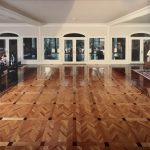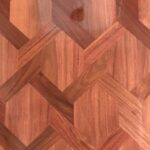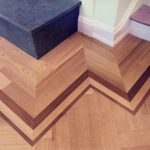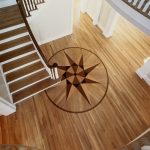When a client commissions a hardwood floor installation, they’re entrusting a team of professionals to bring their dream custom flooring into reality. They’re putting their faith into the flooring company, trusting that they will not make poor decisions and sloppy mistakes.
As we have been designing, installing, sanding, staining, and restoring hardwood flooring in the Greater Boston Areas for over three decades, you can expect that we’ve come across many rookie mistakes performed by do-it-yourselfers and non-professional flooring organizations.
The business of custom wood floors isn’t an easy one; it takes years of dedication and a wealth of experience to learn the craft well. Hardwood flooring companies cannot short-change the process, and in the article, we will share some of the most common hardwood flooring installation mistakes. These mistakes are committed by professionals and non-professionals alike.
1. Failing to Use Dustless Sanding Equipment
To keep a hardwood flooring job as clean and as unobtrusive as possible, crews need to implement the best practices to keep the worksite dust-free within the home. Dustless floor sanding is a critically important process to save a job site from burdening a client’s family with wood dust.
If crews do not tightly section-off the home areas that are being worked on, there’s a high probability that the wood dust will enter other parts of the home, including central air circulation systems. This is not only unsightly; it can be harmful if members of the household have allergies to dust or other respiratory vulnerabilities.
Dustless machines are not only needed for the cleanliness of the home and job, but the quality of the finished product. Without the proper dustless machines, dust particles can become trapped within the finish of the floor and compromise the final outcome.
Dustless sanding machines make a world of difference when working in clients’ homes. If a team is working with dustless sanding equipment, the experience clients have is night and day better than crews without such gear.
2. Not Understanding the Environmental Conditions
Depending on the time of year, environmental factors, such as humidity, can alter how the hardwood behaves during an installation. For example, in Boston and New England, we experience some dry cold winters and hot, humid summers. Hardwood floors installed in homes that are not always climate-controlled are susceptible to expansion during the hotter/humid months and contract during the drier/colder months. These seasonal fluctuations are less of a concern for hardwood installers in milder climates, but it’s something we have to consider here – being Boston hardwood floor installation experts.
Learn more about the beautiful parquet floor pattern, Herringbone!
3. Not Taking the Time for Proper Subfloor Prep
The subfloor, the supporting area beneath hardwood flooring, needs to be prepared so that clients do not experience defective floor issues down the road. If the subfloor is not prepared correctly, clients may experience loud floor creaking, loose boards, and clients will be forced to replace boards if the circumstances call for it.
If the project is prepped correctly in the first place, homeowners won’t have to deal with these nagging and imperfect issues after their hardwood flooring installation is complete.
4. Using Ineffective/Poor Quality Finishes
When installing a new hardwood floor or restoring beauty to an older floor, reference-level finishes and stains must be used to bring the most outstanding appearance to the wood and protect the wood for years to come. Non-professionals will sometimes select the cheapest available option for their flooring finish; this is always a mistake.
Some professionals will use low-quality finishes, stains, and dyes when trying to save costs for a job. It’s best for the wood flooring to use top-quality finishes, stains, and dyes from reputable companies like Bona® – the results speak for themselves.
5. Taking Inaccurate Measurements
The old saying “measure twice, cut once” is more than appropriate when installing hardwood floors. A common rookie mistake for non-professional installers is to assume that all rooms in a home have perfect right angles at every corner. When non-professionals do not take careful, accurate, and detailed measurements of the area they are working in, they will end up with wood planks that look strange in certain places or need to be cut at odd angles to fit the room.
As the hardwood planks create long lines that run across the floor, this mess-up is exceptionally noticeable. Inaccurate measurements are entirely avoidable but become costly mistakes.
Please contact us to learn more about the level of expertise needed to complete a beautiful hardwood floor installation.







